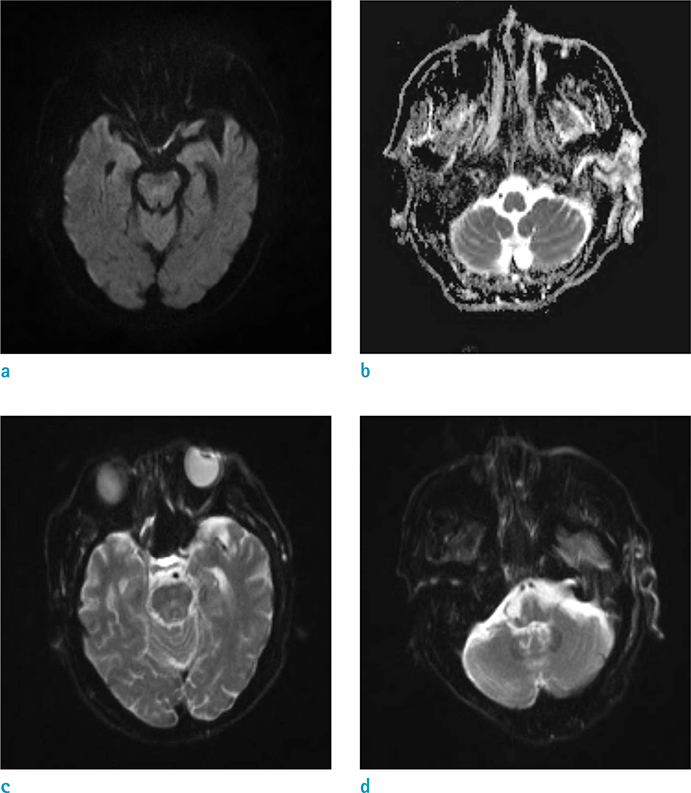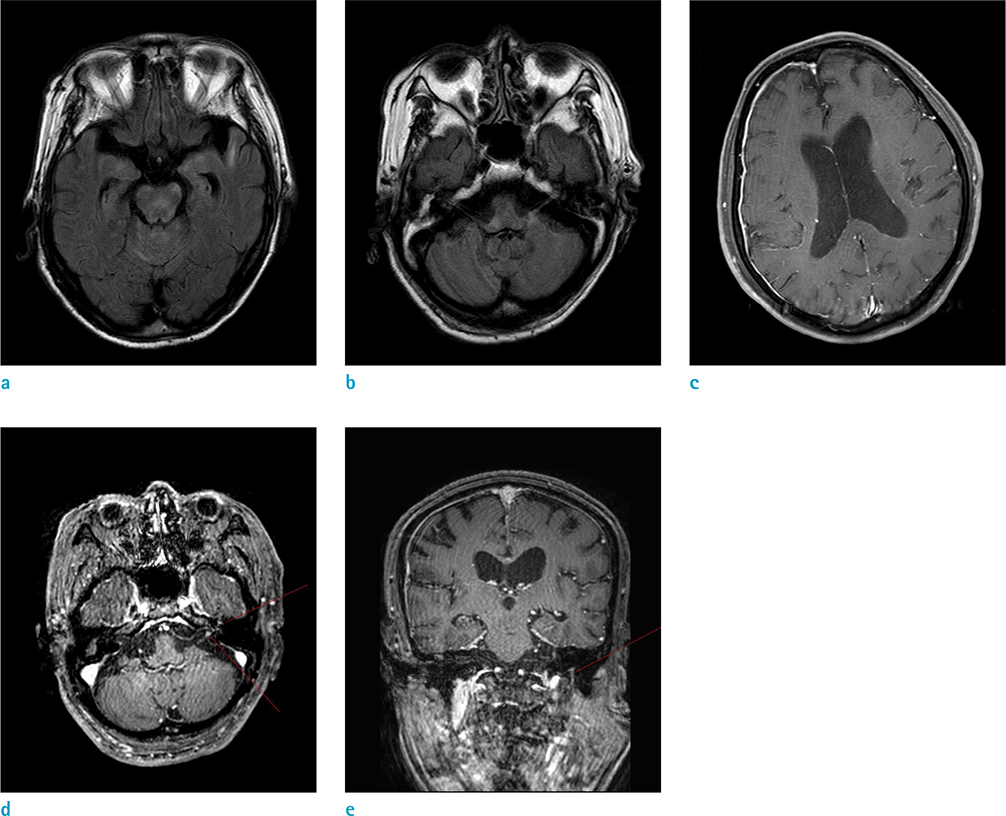Investig Magn Reson Imaging.
2019 Mar;23(1):65-69. 10.13104/imri.2019.23.1.65.
Ramsay Hunt Syndrome Complicated by Meningoencephalitis and Radiologic findings: a Rare Case Report
- Affiliations
-
- 1Department of Radiology, Seoul Medical Center, Seoul, Korea. jnoon276@gmail.com
- KMID: 2442235
- DOI: http://doi.org/10.13104/imri.2019.23.1.65
Abstract
- Ramsay Hunt syndrome with the complication of encephalitis or meningoencephalitis is rarely reported and uncommon in immunocompetent patients. The radiological manifestations of such cases usually involve the cerebellum and brainstem or exhibit the absence of any abnormality. We report a case of a 78-year-old immunocompetent man hospitalized with Ramsay Hunt syndrome, who later developed meningoencephalitis. The cerebrospinal fluid-study excluded other causes of meningoencephalitis, and the clinical diagnosis indicated varicella zoster virus meningoencephalitis. Magnetic resonance imaging revealed increased signal intensities in the bilateral temporal lobe, midbrain, and pons on T2-weighted imaging, and T2 fluid attenuated inversion recovery and contralateral asymmetric pachymeningeal enhancement. Contrast-enhanced T1-weighted imaging revealed ipsilateral facial nerve enhancement.
Keyword
MeSH Terms
Figure
Reference
-
1. Ricigliano VAG, Saraceno L, Cavalli M, Rodegher M, Meola G. Slowly progressing varicella zoster brainstem encephalitis complicating Ramsay Hunt syndrome in an immunocompetent patient: case report and review of the literature. J Neurovirol. 2017; 23:922–928.
Article2. Sweeney CJ, Gilden DH. Ramsay Hunt syndrome. J Neurol Neurosurg Psychiatry. 2001; 71:149–154.3. Kleinschmidt-DeMasters BK, Gilden DH. Varicella-Zoster virus infections of the nervous system: clinical and pathologic correlates. Arch Pathol Lab Med. 2001; 125:770–780.4. Gilden D. Varicella zoster virus and central nervous system syndromes. Herpes. 2004; 11:Suppl 2. 89A–94A.5. Halperin JJ. Diagnosis and management of acute encephalitis. Handb Clin Neurol. 2017; 140:337–347.
Article6. Debiasi RL, Tyler KL. Molecular methods for diagnosis of viral encephalitis. Clin Microbiol Rev. 2004; 17:903–925. table of contents.
Article7. Soares BP, Provenzale JM. Imaging of herpesvirus infections of the CNS. AJR Am J Roentgenol. 2016; 206:39–48.
Article8. Shen YY, Dai TM, Liu HL, Wu W, Tu JL. Ramsay Hunt syndrome complicated by brainstem encephalitis in varicella-zoster virus infection. Chin Med J (Engl). 2015; 128:3258–3325.
Article9. Kaski D, Davies N, Seemungal BM. Varicella-zoster virus meningo-rhombencephalitis presenting as Ramsey Hunt. Neurology. 2012; 79:2291–2292.
Article
- Full Text Links
- Actions
-
Cited
- CITED
-
- Close
- Share
- Similar articles
-
- Atypical Presentation of Acute Vestibular Syndrome with Ramsay Hunt Syndrome
- Ramsay Hunt syndrome
- Two Cases of Ramsay Hunt Syndrome Complicated with Multiple Cranial Nerve Palsy and Aseptic Meningitis
- A Case of Ramsay Hunt Syndrome with Vocal Cord Paralysis
- A Case of Ramsay Hunt Syndrome Showing Central Findings due to Brainstem Involvement



